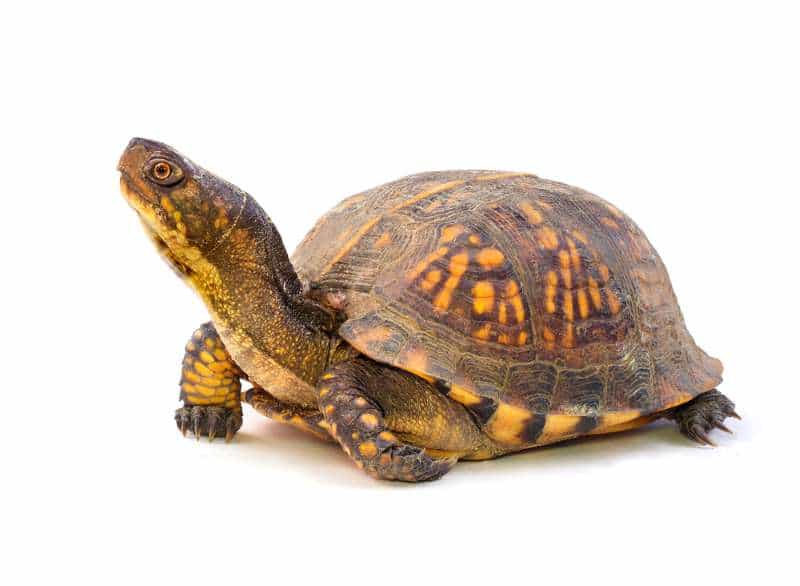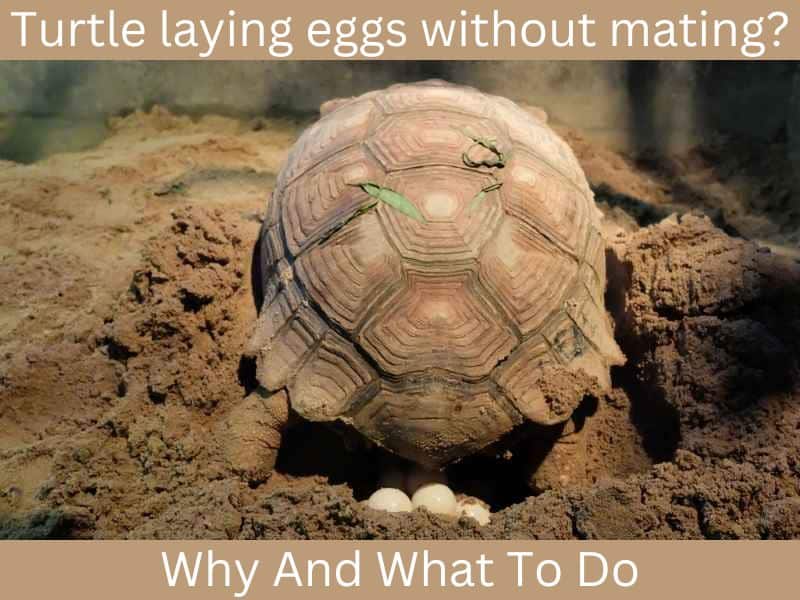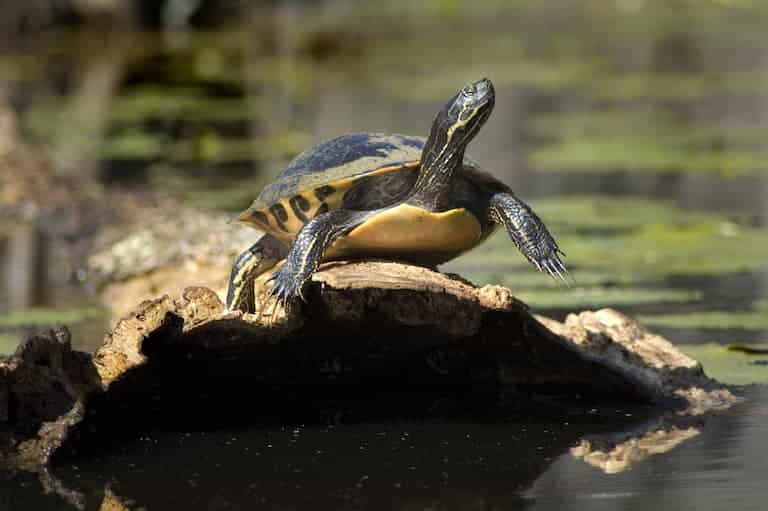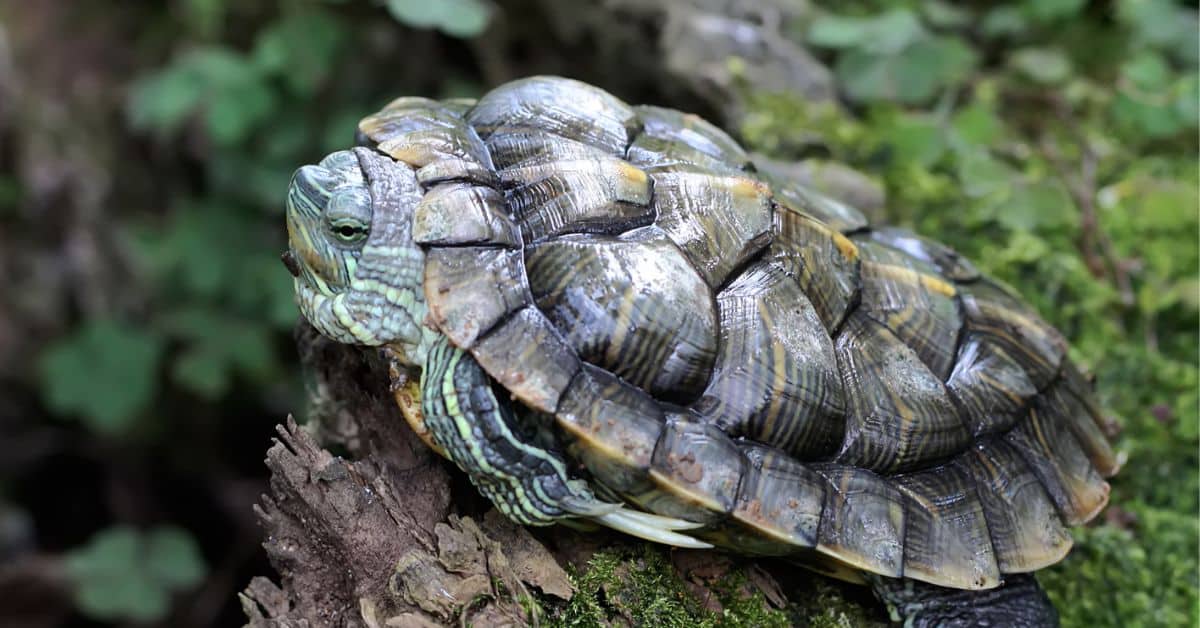Yellow-Bellied Slider vs Red-Eared Slider Turtles: What is the Difference?

Both Yellow-Bellied and Red-Eared slider turtles are popular pets in the United States, for valid reasons. They’re low maintenance and they live for up to fifty years when well cared for. But what are the differences between these two closely related subspecies?
Yellow-Bellied sliders are a subspecies of Red-Eared sliders, thus only slightly different. Most of their differences are their markings, which is why you can house them in the same tank and even breed them with each other.
In this article, I’ll go over their physiological features; their popularity and cost; their temperament, and any nutritional needs. I’ll also explain why you can house them together, and why they’re able to mate with each other. Read on for more.
Contents
How Are Yellow-Bellied Sliders and Red-Eared Sliders Similar?
Yellow-bellied sliders are a subspecies of Red-Eared sliders. They moved from their home in the Mississippi River and became different enough to be classified as subspecies. Clearly, they’re similar, but just how similar are they?
Both Yellow-Bellied and Red-Eared sliders are dimorphous. Males grow to be between 5 and 8 inches (12.7 and 20 cm), and females between 5 and 13 inches (12.7 and 33 cm). Their weight ranges between 240 and 550 grams (0.5 and 1,2 lbs). They also have omnivorous or herbivorous diets.
Size, Weight, Color and Markings
Now that you know how Yellow-Bellied sliders and Red-Eared sliders are similar, you might be wondering how big you can expect your sliders to be. How much will they weigh? What markings will they have?
The first thing you must understand about sliders is that they grow slowly. If there isn’t enough food and space for them, they may even stop growing. This means that sliders come in a broad range of sizes, partly influenced by their environment.
Most males—both Yellow-Bellied and Red-Eared—grow to be between 5-8 inches (12.7 to 20 cm). Females, on the other hand, need the capability to bear eggs, and thus grow to be between 5-13 inches (12.7 to 33 cm)! They can weigh between 240-550 grams (0.5 and 1.2 lbs) once grown.
Yellow-Bellied sliders have yellow stripes on their neck and head, and yellow on the bottom of their shell. Meanwhile, Red-Eared sliders have red stripes on their head, where their ears would be if they had them.
There’s no difference in size between Yellow-Bellied and Red-Eared sliders. However, a male is often a better pick for a pet because of their smaller size; assuming you don’t want to breed them yourself.

Origins, Popularity, and Costs
Yellow-Bellied sliders are popular pets in the United States. The Red-Eared slider is the country’s most popular turtle, however. Their owners set them free elsewhere, so there are populations of Red-Eared sliders all over the world.
Red-Eared sliders are thus an invasive species in India and Australia, where they out-compete native species and are therefore a danger to the local ecosystem.
Yellow-Bellied sliders are native to:
- Georgia
- North Carolina
- South Carolina
- Alabama
The Red-Eared slider, meanwhile, is native to:
- The Mississippi River
- The Gulf of Mexico
- Alabama
The territories of both sliders overlap only in one shared state, Alabama. Here, they have bred together in the wild, too.
Yellow-Bellied and Red-Eared sliders are inexpensive pets to purchase. When they’re small, they can cost as little as $20 at pet stores. This price rises as they grow, but you can expect to never pay more than $100 to purchase one, unless you’re buying from a reputable breeder.
Temperaments
Owners describe both Yellow-Bellied and Red-Eared sliders as being active and athletic, and fond of water. They like waking during the day to bask in the sun and warm up.
Sliders aren’t fond of cuddles, however. Captive-raised sliders may not fear your presence and may swim over to see you. They may even solicit you for a treat. Even so, turtles don’t enjoy handling; they find it stressful. Some may even retreat into their shell or bite your hand.
A Yellow-Bellied and Red-Eared slider will never be a cat or dog, but as long as you let them have their personal space, they still make entertaining and friendly—not to mention low maintenance—pets.

Housing
Sliders, like most reptilian pets, require housing that mimics their native habitat. This means it needs to be warm and wet, with dry areas as well. Most owners recommend a glass aquarium tank for them, because turtles’ claws and shells can scratch acrylic.
You should start out with a larger aquarium than your turtle needs, too. This will prevent you from having to buy new tanks as your pet grows. An adult slider—especially a female—will require at least a 55-gallon tank, so plan ahead.
I suggest you use aquarium gravel to build a shore for a pool of water they can swim in. You will want to use cork bark or larger rocks for dry land. Include a flat space or piece of driftwood for them to bask in the “sun” of a heat lamp. 75 watts or lower is sufficient.
Whatever you do, however, don’t use plastic aquarium plants! Your turtle may try to eat them, and the plastic pieces might injure or irritate their digestive system.
Your slider will also need a screen on their tank to prevent them from climbing out. If they do, they may fall to the floor and hurt themselves. This is the last thing you want.
Required Foods and Nutrition
Young sliders are omnivores who enjoy animal proteins like crickets and shrimp, as well as vegetables like kale and lettuce. As they grow older, they become herbivores and stick to a pretty green diet.
Their diet should be primarily pellets, supplemented with greens that are rich in the vitamin A and calcium they need to grow and create keratin for their shells.
Some of the greens that your turtle will accept include:
- Carrots
- Spinach
- Chard
- Green beans
- Berries
- Pumpkin
You can offer your turtle crickets or shrimp as extra-special treats. Your turtle may have individual tastes, as with any pet, so pay attention to what they enjoy!
Can Yellow-Bellied and Red-Eared Sliders Share One Aquarium?
Aquariums, especially the 55-gallon (208 liter) ones required for an adult turtle, are expensive. If you have more than one turtle, you may have invested in multiple tanks! But, can Yellow-Bellied and Red-Eared sliders share one tank?
Yellow-Bellied and Red-Eared sliders can share one aquarium. They require similar habitats, and get along well, provided they are of similar sizes, of the same sex, and are disease free. If they do not have these things in common, you may create a stressful or even harmful environment for them.
If your turtles are not of the same size, there is a risk that they may injure the other. This can happen by accident, or by competing over food and other resources you give. Red-Eared sliders, in particular, edge other species out of their own habitats, so be diligent in giving your turtles an even playing field.
You also won’t be able to house two sliders of the opposite sex together without the male harassing the female. This causes stress for the female and the male. Neither of them will relax, and this may affect their health.
You’ll need to ensure your turtles are disease free, too. This may require quarantining a recent addition, or having them checked out by the vet. If you don’t, the disease could spread to its tank mate. Then, you’ll have two sick turtles instead of one.
Individual turtles may not be capable of coexisting in one aquarium. You should be able to house a Yellow-Bellied and Red-Eared slider together safely if none of these are issues.
Can Yellow-Bellied and Red-Eared Sliders Breed Together?
If you are considering housing two sliders together, you likely want to know if Yellow-Bellied and Red-Eared sliders can breed.
Yellow-Bellied and Red-Eared sliders can breed. They’re similar enough to do so regularly, in captivity and in the wild. You can breed them yourself if you want more turtles. If you don’t, avoid housing sliders of the opposite sex together.
Yellow-Bellied sliders and Red-Eared sliders are subspecies of each other. Their offspring becomes an “intergradation” between the two.
What is an intergradation? It connects two closely related subspecies, and it’s what happens when they breed in a territory they both share. This happens in Alabama for Yellow-bellied and Red-Eared sliders, as their territories overlap there.
The sliders resulting from these unions have both red and yellow markings. If this sounds desirable to you, you may wish to breed some. Be warned, however, that getting reptile eggs to hatch can be difficult and intensive. Even the temperature can dictate whether they hatch or rot.
Conclusion
Yellow-Bellied and Red-Eared sliders are a connected subspecies with low maintenance and low costs associated with their care. With their similar size and weight, ability to share the same habitat, and simple, accessible diet, they both make great pets!




